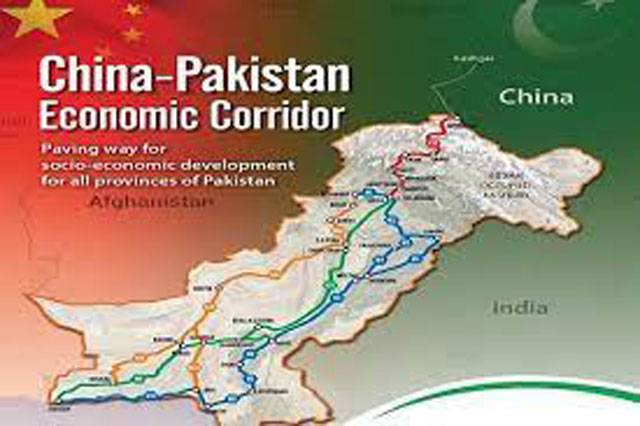By: Naz Pervin
The Belt and Road Initiative (BRI), launched by China in 2013, is an ambitious global development strategy aimed at enhancing regional connectivity and economic growth. Among its various projects, the China-Pakistan Economic Corridor (CPEC) stands out as a flagship initiative, envisioned as a transformative partnership between China and Pakistan.
Overview of CPEC and Its Objectives
CPEC is a multi-billion-dollar infrastructure project that is a cornerstone of the broader BRI. Officially launched in 2015 during Chinese President Xi Jinping’s visit to Pakistan, CPEC was initially valued at $46 billion, though it later expanded to an estimated $62 billion. The corridor aims to connect Gwadar Port in southwestern Pakistan to China’s Xinjiang region through a network of highways, railways, and pipelines, facilitating trade and energy flow between the two countries.
The objectives of CPEC are multi-faceted. Economically, it seeks to modernize Pakistan’s infrastructure, alleviate the country’s energy shortages, and create a network of special economic zones (SEZs) to foster industrial growth. Strategically, CPEC provides China with a shorter and potentially more secure route for its imports and exports, bypassing the volatile South China Sea and the Malacca Strait. Additionally, CPEC is intended to strengthen the long-standing China-Pakistan relationship, providing stability in a region plagued by conflicts.
Significance of CPEC for Pakistan
For Pakistan, CPEC represents an unprecedented opportunity for economic development. The project’s emphasis on infrastructure has led to the construction of new highways, the upgrading of existing roads, and the development of ports, most notably Gwadar. These developments have significantly improved connectivity within Pakistan, reducing travel times and boosting trade within the country and with neighboring regions.
Several key CPEC projects are ongoing, reflecting the corridor’s transformative potential. Among these, the upgrade of the Main Line-1 (ML-1) railway stands out as a critical infrastructure project. This $6.8 billion initiative aims to modernize Pakistan’s railway system, enhancing the speed and capacity of trains between Karachi and Peshawar. Upon completion, ML-1 is expected to significantly improve logistics and trade, reducing transportation costs and fostering regional integration.
Another significant project is the development of the Gwadar International Airport, which is poised to become the largest airport in Pakistan. This project, part of a broader plan to transform Gwadar into a major economic hub, will facilitate both domestic and international trade, further integrating Pakistan into global markets .In the energy sector, CPEC continues to play a crucial role. The Karot Hydropower Project, which is nearing completion, is expected to add 720 megawatts to Pakistan’s national grid. This project, along with other renewable energy initiatives under CPEC, is vital for addressing Pakistan’s energy shortages and promoting sustainable development (CSIS).
CPEC’s impact on employment and economic growth has also been notable. The construction phase alone created tens of thousands of jobs for Pakistanis, while the operational phases of various projects promise to generate even more employment opportunities. The influx of foreign direct investment (FDI) from China has also bolstered Pakistan’s economy, contributing to GDP growth and helping to stabilize the country’s financial situation during challenging times .
These ongoing projects underscore CPEC’s significance as a driver of economic development in Pakistan, offering both immediate benefits in terms of infrastructure and energy and long-term potential for growth and prosperity. However, the successful realization of these projects will require continued efforts to address the challenges of financing, security, and environmental sustainability.
Challenges and Criticisms
Despite its successes, CPEC has not been without its challenges. One of the most significant issues has been the slow pace of project completion. As of 2024, only a quarter of the announced CPEC projects have been completed, with many others delayed due to financial constraints, bureaucratic hurdles, and security concerns. The security situation in Balochistan, where Gwadar Port is located, remains particularly precarious, with frequent attacks on Chinese workers by separatist groups and militants, adding a layer of risk to the project.
The environmental impact of CPEC’s energy projects has also been a point of contention. A significant portion of the energy investments have gone into coal-fired power plants, which, while addressing Pakistan’s energy shortages, have raised concerns about pollution and public health. This reliance on coal runs counter to global trends towards cleaner energy, and critics argue that it undermines Pakistan’s long-term environmental sustainability.
Moreover, there are growing concerns about the economic feasibility of some CPEC projects. The high cost of infrastructure development, coupled with Pakistan’s already strained financial resources, has led to fears of unsustainable debt. Critics argue that the financial burden of repaying Chinese loans, combined with the revenue-sharing arrangements that favor Chinese companies, could outweigh the economic benefits for Pakistan in the long run.
Conclusion
CPEC is undoubtedly a project of immense significance for both China and Pakistan. It embodies China’s vision of regional connectivity and economic integration, while offering Pakistan a chance to overcome some of its most pressing economic challenges. However, the project also faces substantial hurdles, including security issues, environmental concerns, and the risk of debt dependency. As CPEC enters its second decade, the success of this ambitious initiative will depend on how these challenges are addressed and whether the promises of economic transformation can be fully realized.
In summary, while CPEC has brought tangible benefits to Pakistan in terms of infrastructure, energy, and employment, its long-term success will require careful management of the financial, environmental, and security challenges that have emerged. The future of CPEC, and by extension, the BRI, will be a critical test of China’s ability to implement large-scale development projects in complex and volatile regions.

